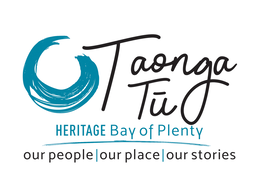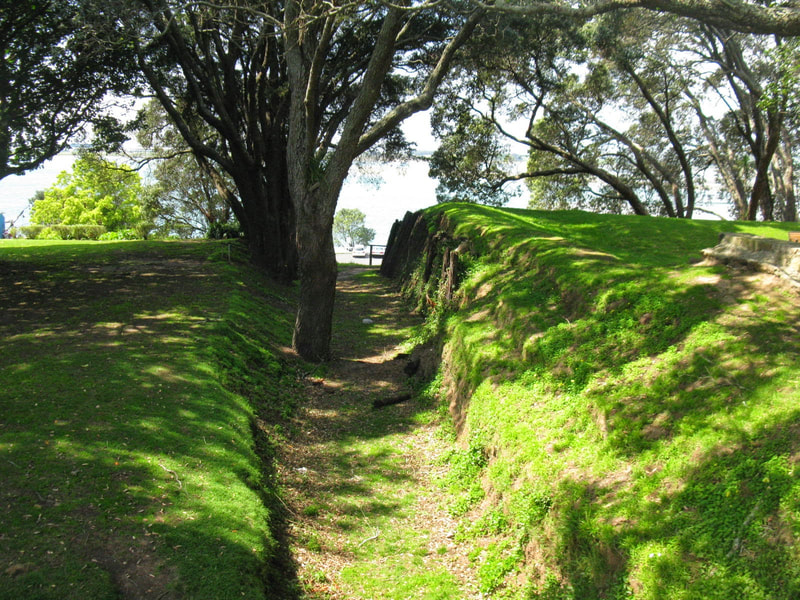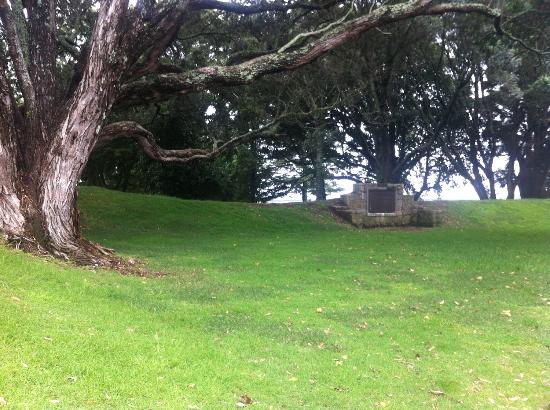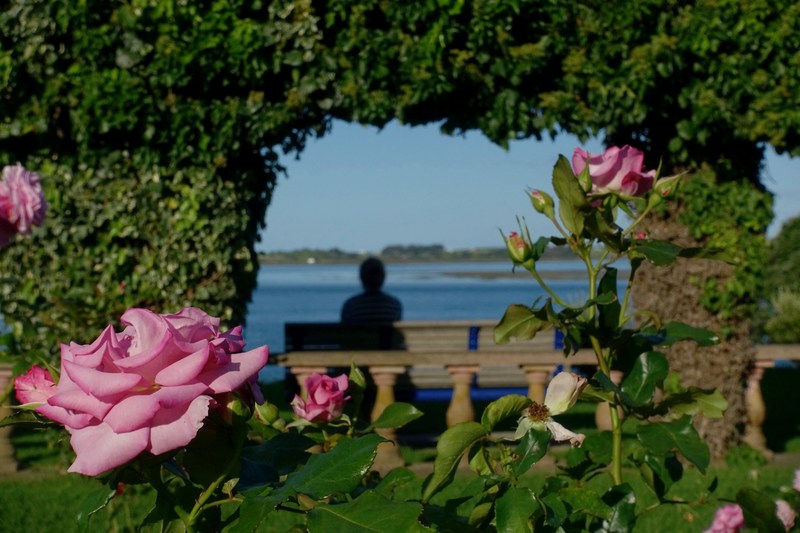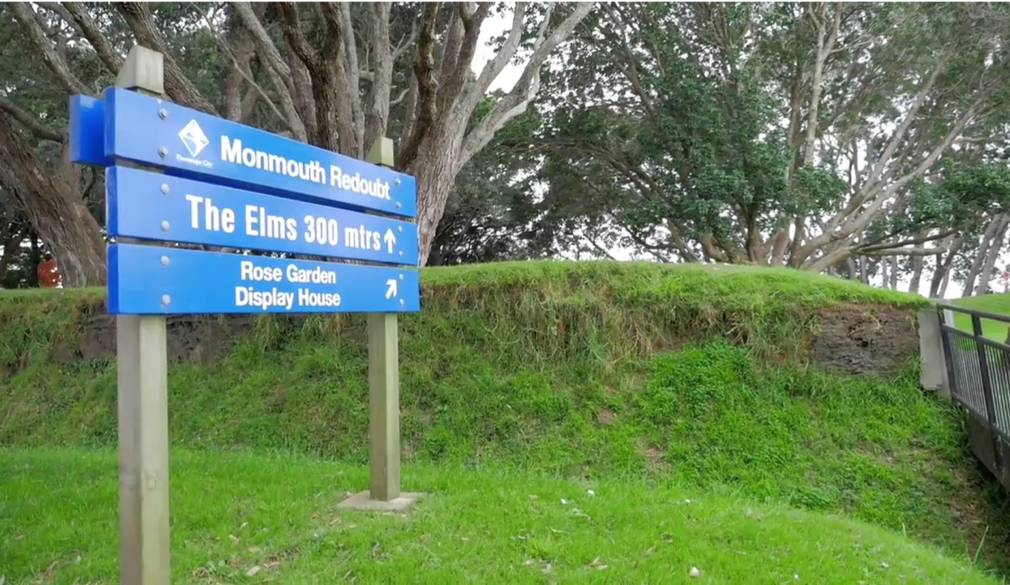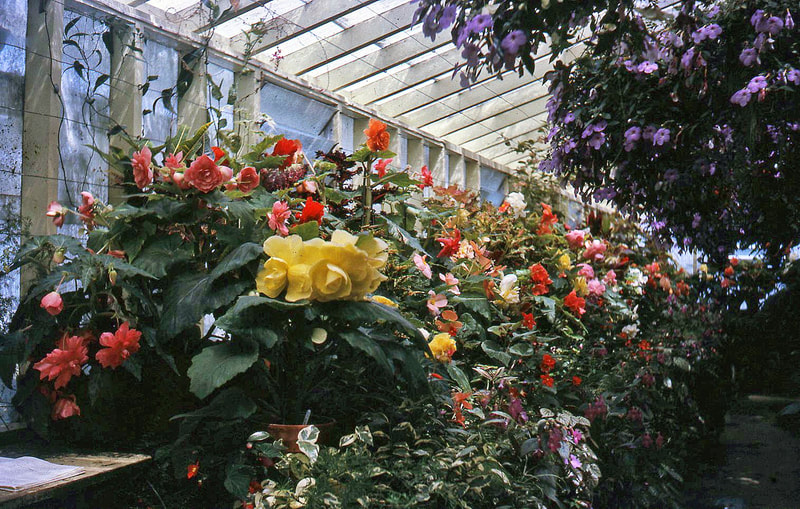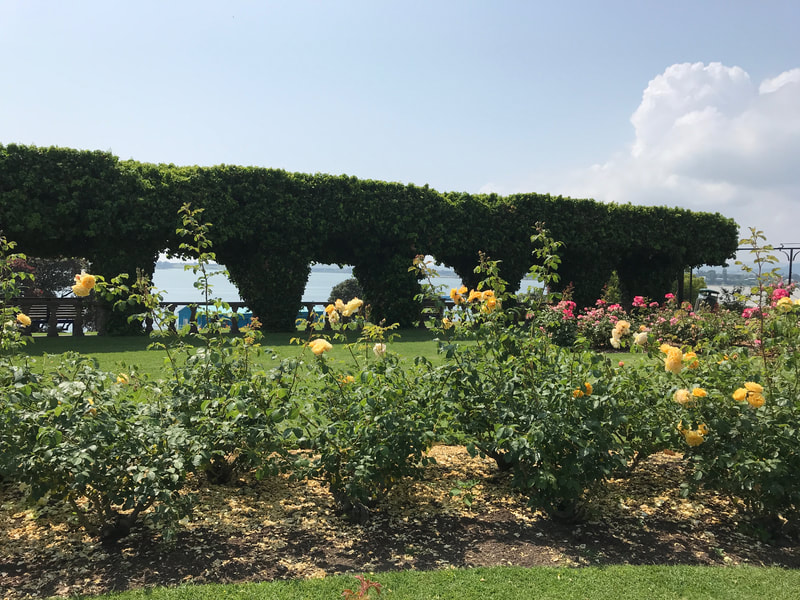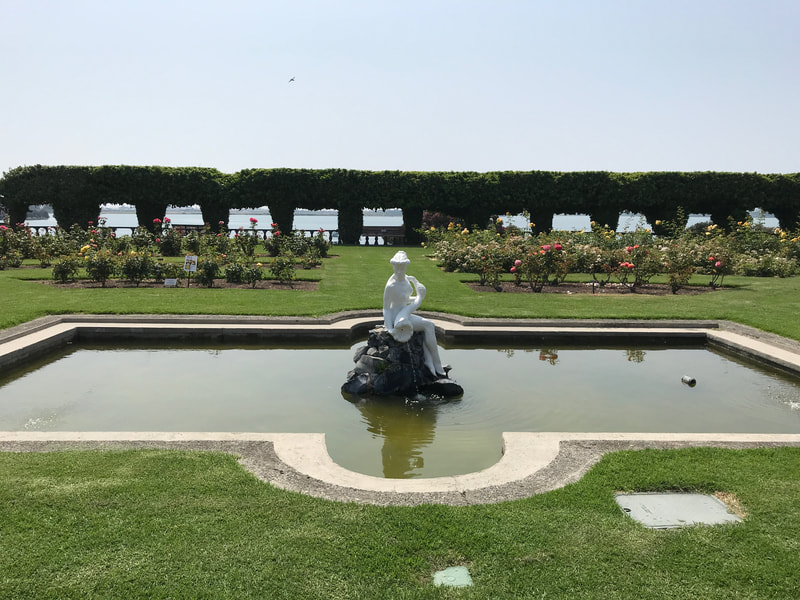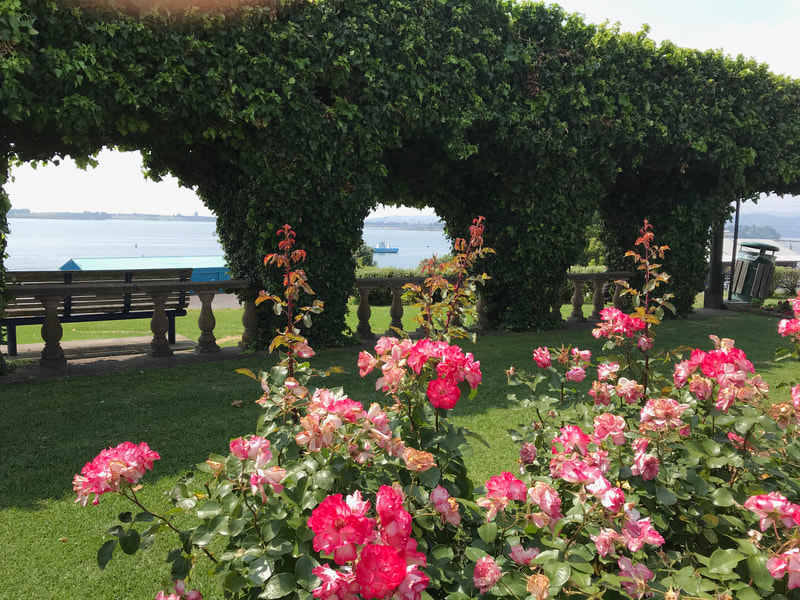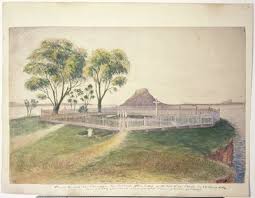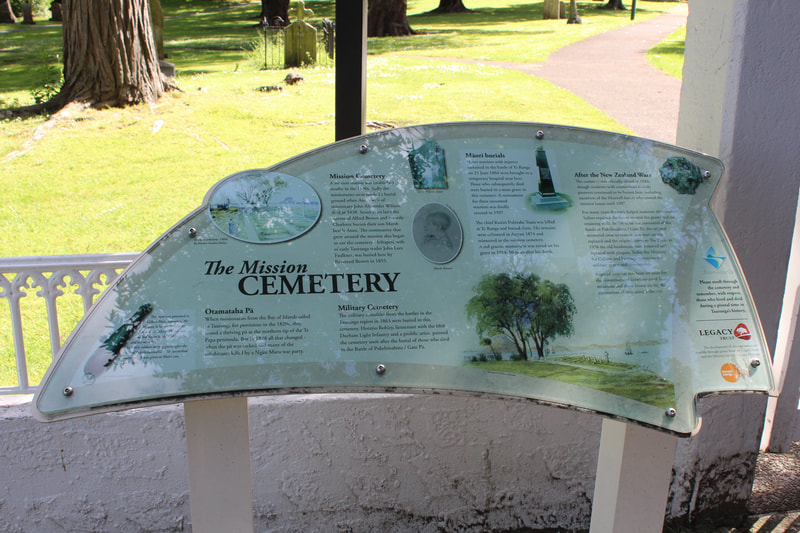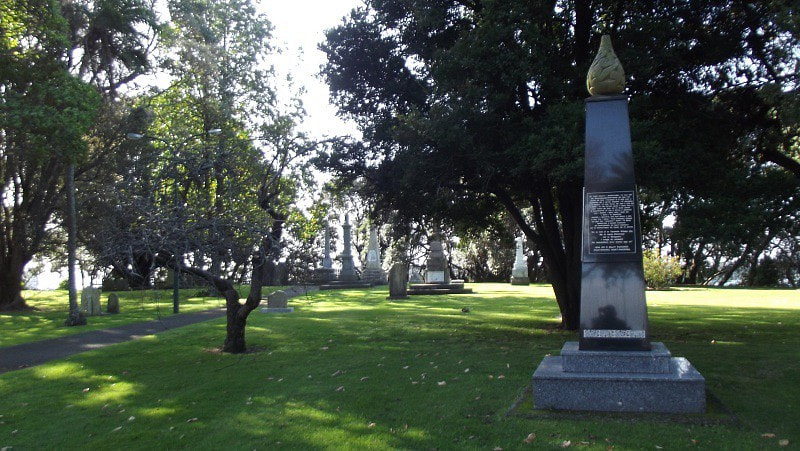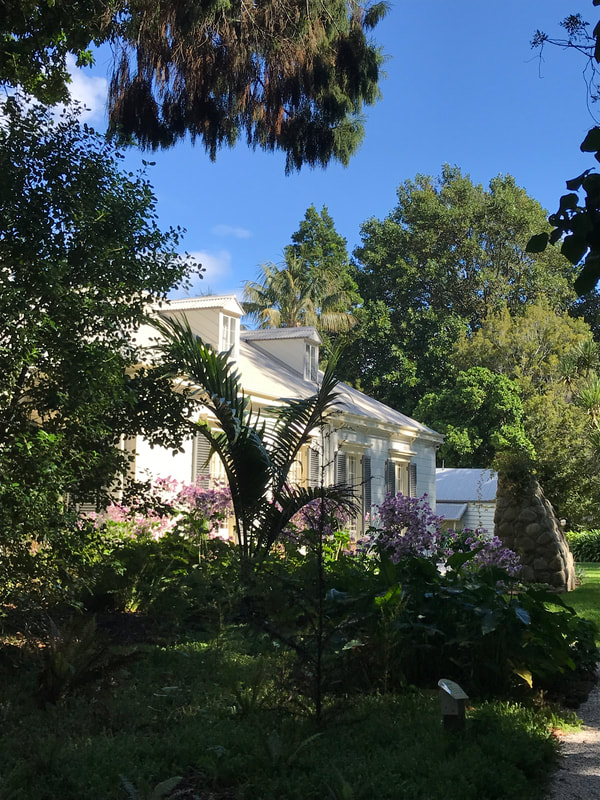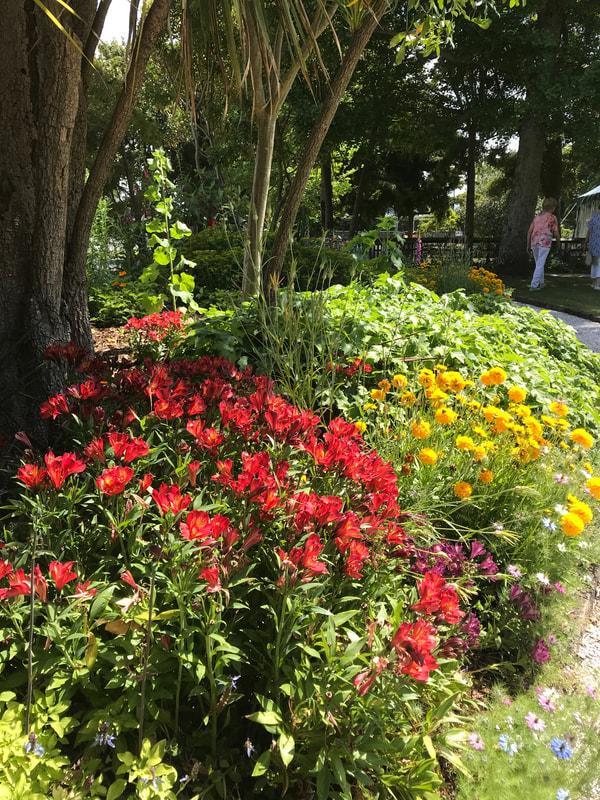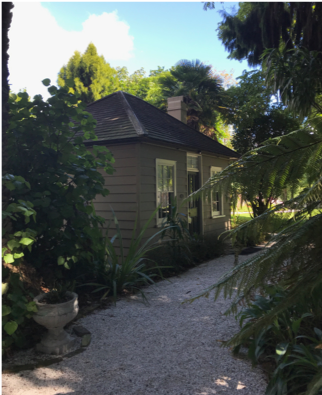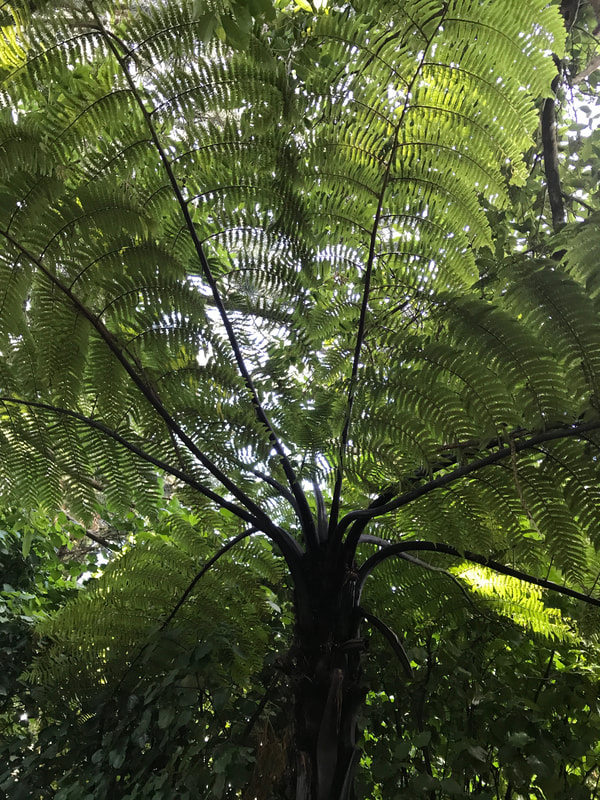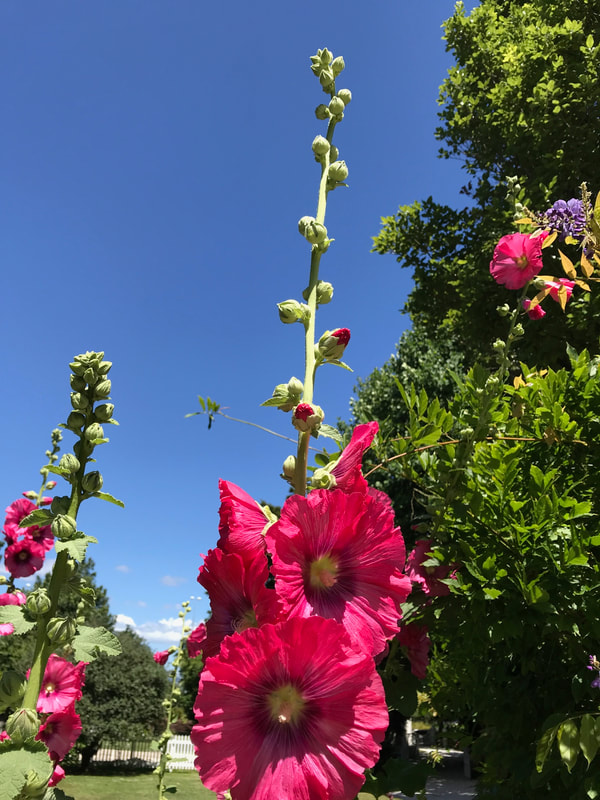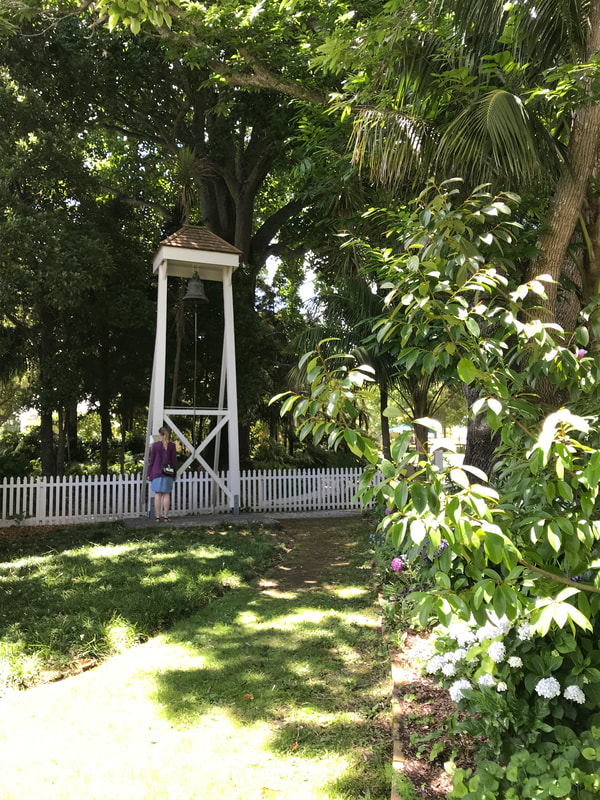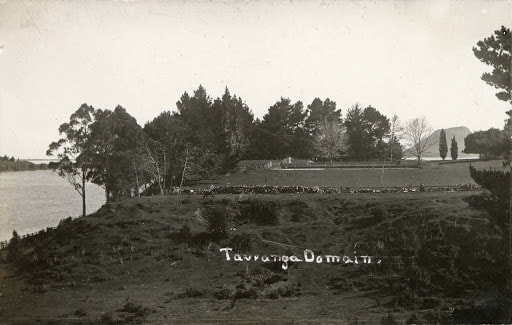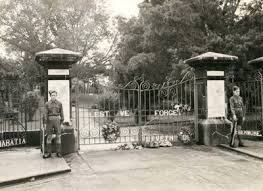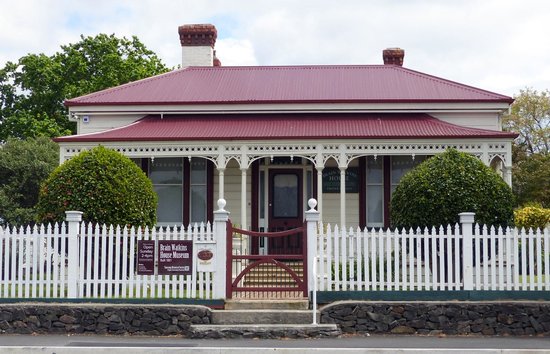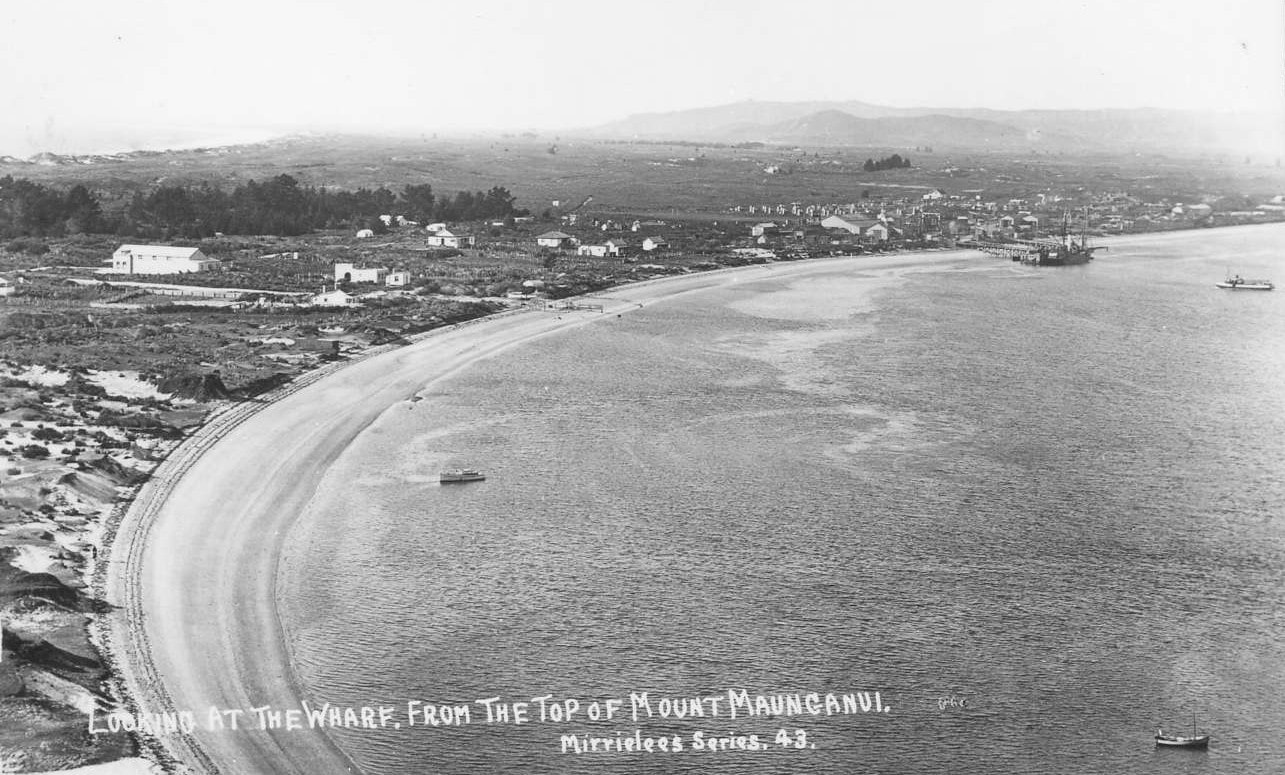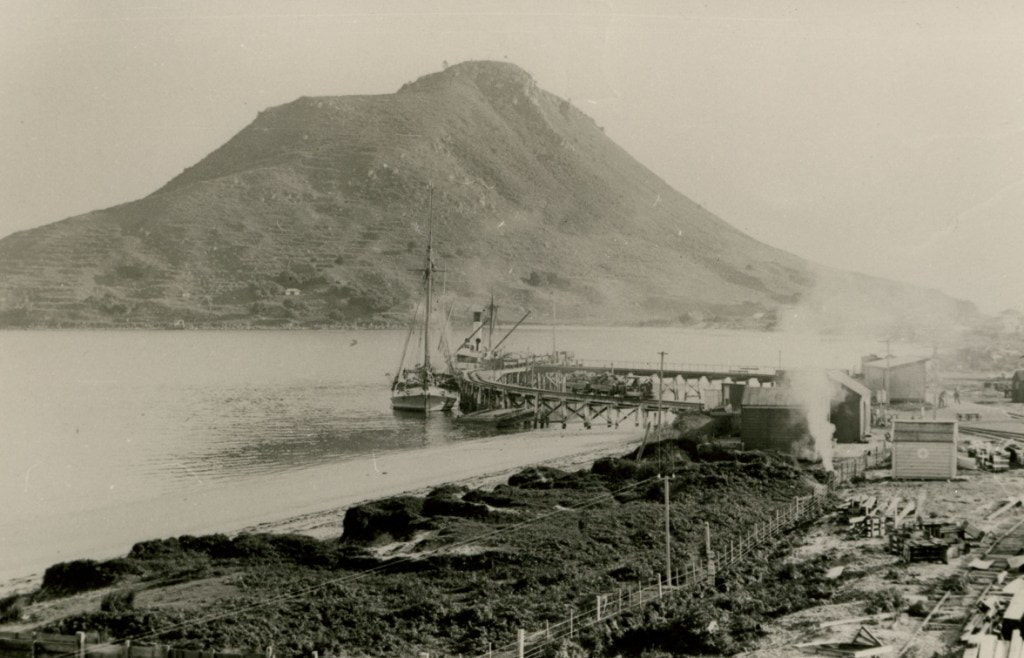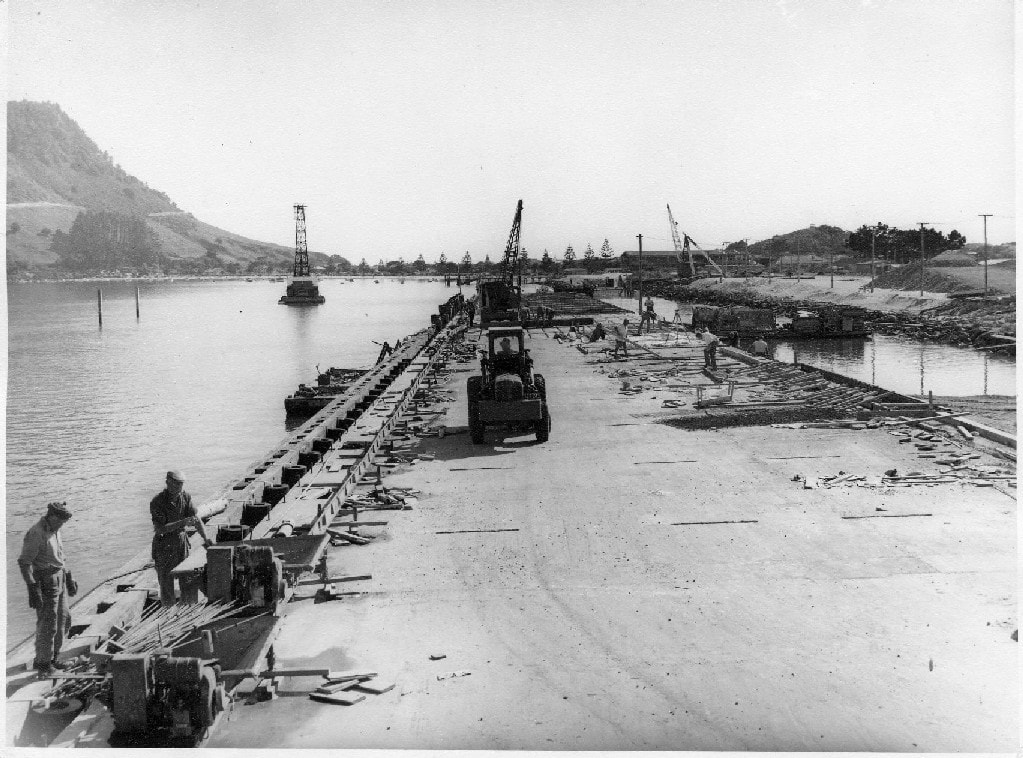'Titiro whakamuri, kōkiri whakamura'
'When you understand the past, you know your future'
'When you understand the past, you know your future'
Te Papa (Tauranga) Historic Area
The background
The northern end of Tauranga's Te Papa peninsula, which is known as Tauranga's historic area, was occupied by Māori until the devastating raid in 1828 by Ngāti Maru from the Thames area on Otamataha Pā after which the remaining hapū fled. Today the hapū of the Te Papa peninsula are represented by Otamataha Trust
European arrivals: prior to the raid was the arrival of HMS The Herald. At 9am on Friday 23 June 1826 HMS The Herald was the first European ship to enter Tauranga Harbour. Henry Williams, leader of the Christian Missionary Society (CMS) conducted a Christian service at Otamataha Pā (Mission Cemetery). However other account say the service was conducted at Waikorire Pilot Bay.
Te Papa Mission Station: 1838-1839. In 1834 Alfred Nesbit Brown first visited Tauranga with Henry Williams. They met with Maungatapu Pā chiefs looking for land. In 1838 the CMS settled for the Te Papa site. Under Brown, the Christian Missionary Society (CMS) purchased 12.5 hectares from Māori to establish the Te Papa Mission Station. In 1839 they purchased 240 hectares from the Te Papa Mission Station to Pukehinahina (Gate Pa).
The New Zealand War years 1864 - 1867. The Battle of Gate Pā | Pukehinahina, massacre at Te Ranga (1864) and Te Weranga ki Taumata Tauranga Bush Campaign (1867) triggering wide spread raupātu (confiscation) of land. Māori won the Battle of Gate Pa - but lost to the Colonists at Te Ranga. The Te Papa block owned by CMS was the gifted to the Crown. In return the CMS was to keep one 5th for the benefit of Maori.This did not happen.
Military Settlers: 1867-1878 and the township of Tauranga. Conflicts occurred as confiscated land starts to be surveyed. The Te Papa block was subdivided and given to military settlers founding the township of Tauranga.
Cliff Road Te Papa and The Apology 1990s - 2018. In the mid 1990s a Christian organisation called Te Kohinga quietly advocated with the Māori tribes for the land to be returned to them. These tribes formed Otamataha Trust representing three hāpu. Naboth's Vineyard - an exceptional piece of work by Dr Alistair Reece - outlines the history leading up to the historic 2018 Anglican Apology which sets Cliff Road as a place of 'Forgiveness and Reconciliation' and ultimate unification.
Tauranga Civic Centre 2022. In turn The Apology has resulted in the Tauranga City Council forming an historic 50/50 partnership between Otamataha Trust and the Council for the development of the Civic Centre and its Museum.
Ōtamataha Pā and the Cliff Road area, is within Tauranga's historic area adjacent to the CBD. The three hapū of the area hold the stories of its rich history in the palm of their hands as this area comprises significant Māori history, historic reserves, buildings and heritage gardens.
This unique historic area, called 'the green necklace' includes our entwined history:
Read more about the historic area here
Locals and visitors alike will be attracted to this historic area for the rich stories it has to tell. With its aspect to Mauao and with so many historic sites to visit between Fifth Avenue and Sulphur Point (72 in fact) in this area of Tauranga, all will enjoy this small part of Tauranga; the heritage trees and gardens, the picnic spaces in shady historic spots and other sites of interest with our entwined history - and all within the CBD.
The northern end of Tauranga's Te Papa peninsula, which is known as Tauranga's historic area, was occupied by Māori until the devastating raid in 1828 by Ngāti Maru from the Thames area on Otamataha Pā after which the remaining hapū fled. Today the hapū of the Te Papa peninsula are represented by Otamataha Trust
European arrivals: prior to the raid was the arrival of HMS The Herald. At 9am on Friday 23 June 1826 HMS The Herald was the first European ship to enter Tauranga Harbour. Henry Williams, leader of the Christian Missionary Society (CMS) conducted a Christian service at Otamataha Pā (Mission Cemetery). However other account say the service was conducted at Waikorire Pilot Bay.
Te Papa Mission Station: 1838-1839. In 1834 Alfred Nesbit Brown first visited Tauranga with Henry Williams. They met with Maungatapu Pā chiefs looking for land. In 1838 the CMS settled for the Te Papa site. Under Brown, the Christian Missionary Society (CMS) purchased 12.5 hectares from Māori to establish the Te Papa Mission Station. In 1839 they purchased 240 hectares from the Te Papa Mission Station to Pukehinahina (Gate Pa).
The New Zealand War years 1864 - 1867. The Battle of Gate Pā | Pukehinahina, massacre at Te Ranga (1864) and Te Weranga ki Taumata Tauranga Bush Campaign (1867) triggering wide spread raupātu (confiscation) of land. Māori won the Battle of Gate Pa - but lost to the Colonists at Te Ranga. The Te Papa block owned by CMS was the gifted to the Crown. In return the CMS was to keep one 5th for the benefit of Maori.This did not happen.
Military Settlers: 1867-1878 and the township of Tauranga. Conflicts occurred as confiscated land starts to be surveyed. The Te Papa block was subdivided and given to military settlers founding the township of Tauranga.
Cliff Road Te Papa and The Apology 1990s - 2018. In the mid 1990s a Christian organisation called Te Kohinga quietly advocated with the Māori tribes for the land to be returned to them. These tribes formed Otamataha Trust representing three hāpu. Naboth's Vineyard - an exceptional piece of work by Dr Alistair Reece - outlines the history leading up to the historic 2018 Anglican Apology which sets Cliff Road as a place of 'Forgiveness and Reconciliation' and ultimate unification.
Tauranga Civic Centre 2022. In turn The Apology has resulted in the Tauranga City Council forming an historic 50/50 partnership between Otamataha Trust and the Council for the development of the Civic Centre and its Museum.
Ōtamataha Pā and the Cliff Road area, is within Tauranga's historic area adjacent to the CBD. The three hapū of the area hold the stories of its rich history in the palm of their hands as this area comprises significant Māori history, historic reserves, buildings and heritage gardens.
This unique historic area, called 'the green necklace' includes our entwined history:
- Hapū history of this area pre European times
- The archeologically significant Ōtamataha Pā (Mission Cemetery) and Cliff Road area which was over-run by a marauding tribe in 1828
- The Elms Mission Library and buildings (1838) and heritage gardens
- The Mission Cemetery (1838)
- The Old Post Office (1863)
- The Monmouth Redoubt (1864)
- The Domain as a Reserve (1873) - with sports Tennis, Croquet, Rugby Cricket and Bowls from 1888.
- The Aspen Tree - Willow Street (1880) - No longer there sadly - but it is still a story to be told
- Brain Watkins House (1881)
- The Bonded Warehouse (1883) at No. 1 The Strand
- The Rail Bridge (1910)
- Statue of Cannon Jordon - Wharepai Domain (1916)
- The Domain Gates - Wharepai Domain (1921)
- Herries Park - The Strand (1928)
- ANZ Bank building - Spring Street (1938) & Sculpture (1995) - Legend of Taurikura
- The Robbins Park Begonia Glasshouse (1954)
- Rose Gardens - Cliff Road (1958)
- Hotel St Amand - The Strand (1962)
- Te Awanui Canoe - The Strand (1973)
Read more about the historic area here
Locals and visitors alike will be attracted to this historic area for the rich stories it has to tell. With its aspect to Mauao and with so many historic sites to visit between Fifth Avenue and Sulphur Point (72 in fact) in this area of Tauranga, all will enjoy this small part of Tauranga; the heritage trees and gardens, the picnic spaces in shady historic spots and other sites of interest with our entwined history - and all within the CBD.
Click on images below to read captions
Photograph acknowledgement: The Elms, Tauranga City Libraries,Tauranga Historical society and C R Brown
Great cities have iconic historic areas that have many stories to tell.
Tauranga's historic area has outstanding potential for iwi to work together with heritage partners for creating a registered Historic Area under New Zealand New Zealand | Pouhere Taonga. No other area within Tauranga City's CBD has the potential for creating such a deeply meaningful and stunning historic presence. Read more about The Historic Footprints of Te Papa- an exceptional piece of work by John Coster.
Tauranga's historic area has outstanding potential for iwi to work together with heritage partners for creating a registered Historic Area under New Zealand New Zealand | Pouhere Taonga. No other area within Tauranga City's CBD has the potential for creating such a deeply meaningful and stunning historic presence. Read more about The Historic Footprints of Te Papa- an exceptional piece of work by John Coster.
Cliff Road (Otamataha Pā) site has deep connection to our harbour (Te Awanui)
Click on images below to read captions
Photo Acknowledgement: History Tauranga Port and Tauranga City Libraries
Photo Acknowledgement: History Tauranga Port and Tauranga City Libraries
Tauranga harbour has sustained the community for nearly nine hundred years when iwi first sailed through the harbour entrance in their waka. The first European ship to grace our harbour was The Herald in 1826, bringing the missionaries and early settlers. Our harbour represents a significant taonga in itself. In 1950 Tauranga was chosen as an export port for the Bay of Plenty, creating many jobs and increasing the population markedly. Tauranga has continued to become a thriving marine city, its story just waiting to be told. The Port of Tauranga's history here.
Header Photo Acknowledgement: nzpostcards, The Elms, Tauranga City Libraries
HOME
ABOUT: Our Team | Ōtamataha Pā | Taonga - our treasure | Our brand story
WHATS ON: Exhibitions | Past Events | Videos
DISCOVER: Our Tāngata whenua | Early Tauranga | Waihi Beach | Katikati | Mauao - the legend | The Kaituna | Te Puke | Maketu - magic
OUR HERITAGE: Heritage Collection | Heritage Gallery | Battles of Gate Pā & Te Ranga | The Apology | St George's Gate Pā | The Elms |
Historical Society | Tauranga Jazz Festival History | Maori Proverbs | Heritage Organisations | Archives | The Golden Years
HERITAGE FRIENDS
CONTACT
ABOUT: Our Team | Ōtamataha Pā | Taonga - our treasure | Our brand story
WHATS ON: Exhibitions | Past Events | Videos
DISCOVER: Our Tāngata whenua | Early Tauranga | Waihi Beach | Katikati | Mauao - the legend | The Kaituna | Te Puke | Maketu - magic
OUR HERITAGE: Heritage Collection | Heritage Gallery | Battles of Gate Pā & Te Ranga | The Apology | St George's Gate Pā | The Elms |
Historical Society | Tauranga Jazz Festival History | Maori Proverbs | Heritage Organisations | Archives | The Golden Years
HERITAGE FRIENDS
CONTACT
Content Copyright Organic Living Ltd © 2022
